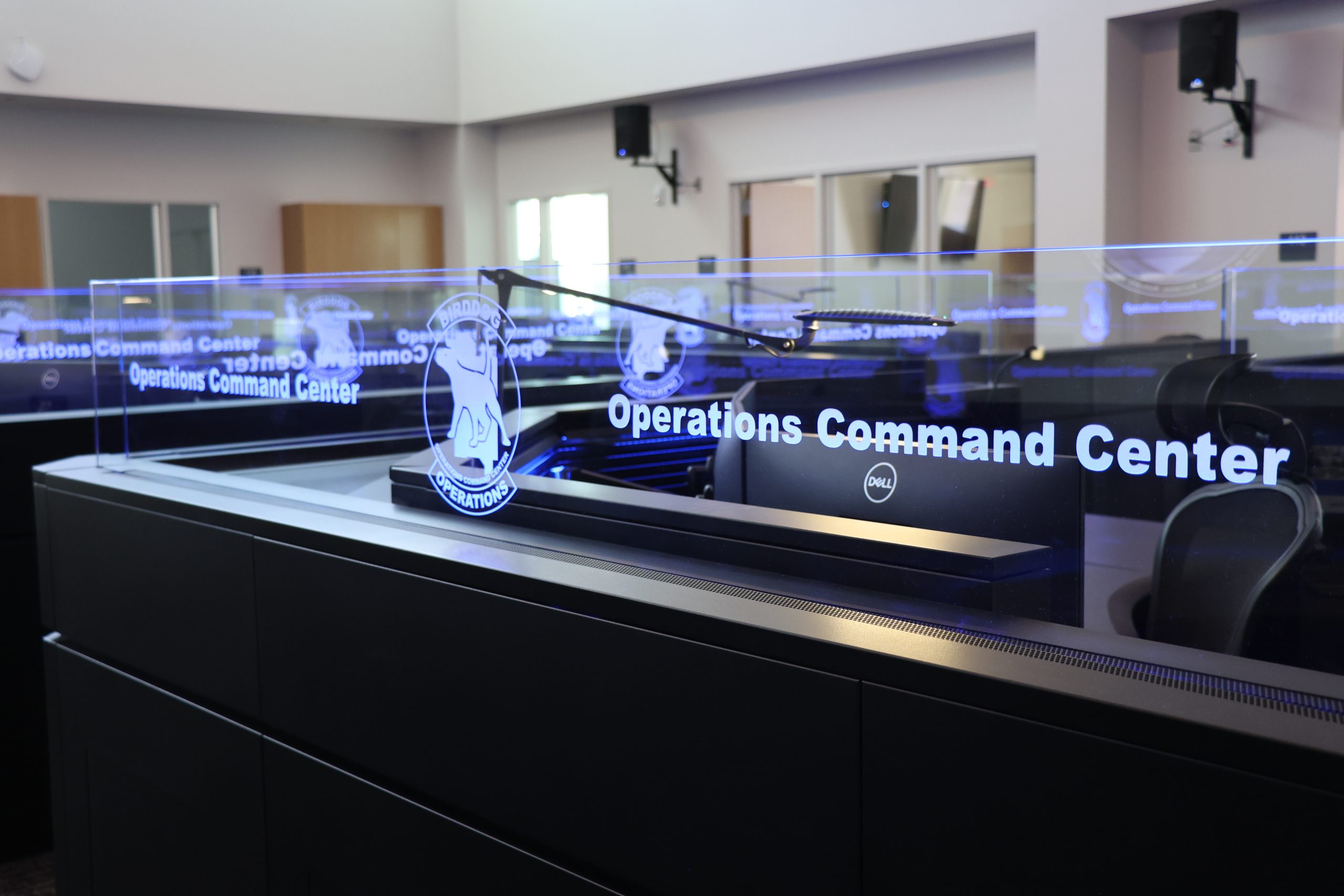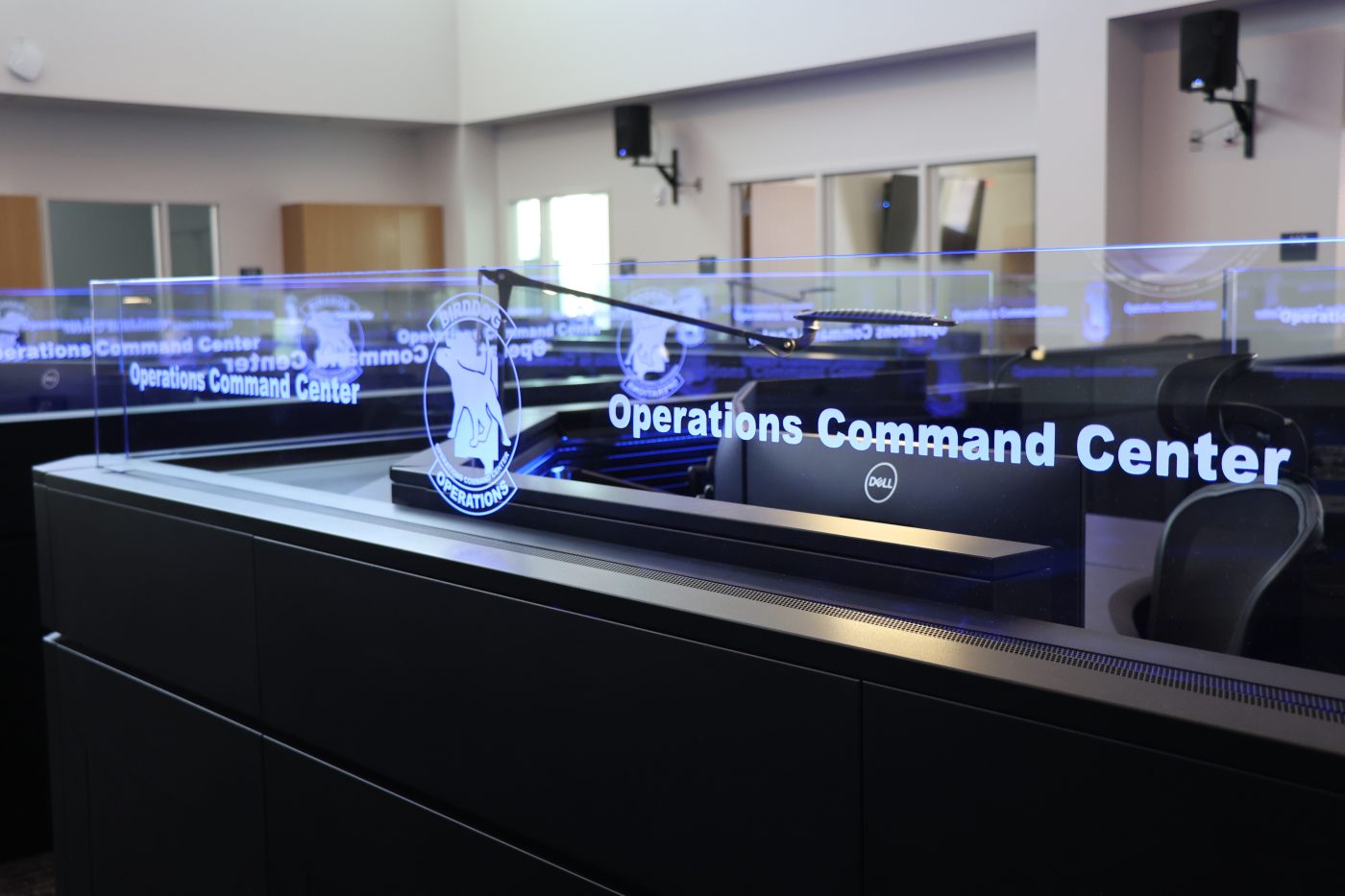
Nevada Site Operations Center

Nevada Site Operations Center
At the Nevada Site Operations Center (NSOC), we are committed to ensuring the safe and efficient management of operations at the Nevada National Security Sites (NNSS). Our state-of-the-art facility serves as the nerve center, overseeing and coordinating a wide range of activities 24/7.
Equipped with cutting-edge technology and staffed by highly skilled professionals, the NSOC is the central hub housing both the Emergency Operations Center (EOC) and the Operations Command Center (OCC). Together, these centers play a vital role in safeguarding our operations and responding swiftly to any emergencies.
Staffed around the clock by dedicated professionals, the OCC and EOC form the backbone of our operational support system, ensuring a rapid and coordinated response to any situation. The OCC and EOC serve as the central nerve centers for the NNSS, including the Site, North Las Vegas Facility, Remote Sensing Laboratory at both Nellis Air Force Base and Joint Base Andrews, Livermore Operations, Los Alamos and Sandia Operations, Special Technologies Laboratory, and the New York Field Office.
Operations Command Center
Your Reliable 24/7 Support System
The OCC plays a crucial role in coordinating and supporting operations across the entire NNSS complex, ensuring seamless communication and effective response capabilities. By serving as the central coordination and support hub, the OCC enables efficient communication, effective emergency response and streamlined operations, not only for the Site itself, but also for the satellite locations that are integral to the NNSS mission.
Expert Staff for Critical Situations
Our team of highly trained professionals is ready to handle any emergency or operational need. Here are some key roles within our OCC:
- Duty Managers: Our duty managers are responsible for emergency and non-emergency notifications, implementing protective actions, and making recommendations to off-site personnel. They also manage access tracking into and out of controlled access areas of the Site.
- 911 Dispatcher: Our skilled 911 dispatchers are the first point of contact for emergency calls. They receive NNSS 911 calls and radio duress “mayday” notifications, dispatch emergency responders, provide emergency medical instructions, and facilitate mutual aid requests from agencies such as the Bureau of Land Management and Mercy Air.
- Air and Ground Operations Support: Our dedicated team works closely with our customers to schedule and deconflict both ground and air operations at NNSS. Their expertise ensures smooth mission execution and coordination.
- Frequency Management: Our frequency management team ensures that all radio frequency and wireless equipment is authorized and used in accordance with federal policies, maintaining secure and efficient communication channels.
- Counter Unmanned Aircraft Systems: Our experts monitor NNSS airspace, utilizing advanced systems to detect and neutralize any unauthorized unmanned aircraft, ensuring the safety and security of our operations.
Emergency Operations Center
Coordinating Preparedness and Response Efforts
The EOC is a critical component of the NSOC and serves as a central command and control hub for emergency preparedness and response activities. The EOC plays a vital role in coordinating and facilitating effective response efforts during emergencies, ensuring the safety of personnel, protection of the environment, and preservation of critical infrastructure within the NNSS.
Key Functions of the EOC:
- Situational awareness and information management: The EOC is responsible for gathering, analyzing, and disseminating information about emergencies and potential threats. It maintains situational awareness by monitoring real-time data, conducting risk assessments, and communicating essential information to decision-makers and response teams.
- Coordination and collaboration: The EOC serves as the central coordination point, bringing together various stakeholders, response teams, and agencies involved in emergency response. It fosters collaboration, facilitates information sharing, and ensures effective communication channels between internal and external partners.
- Emergency response and incident management: During emergencies, the EOC activates and mobilizes response teams, deploying resources and assets as needed. It provides guidance, support, and direction to incident management personnel, facilitating a coordinated and efficient response to mitigate hazards and manage the incident effectively.
- Resource management: The EOC oversees the allocation and utilization of resources, such as personnel, equipment, and supplies, to support emergency response operations. It maintains inventories, tracks resource availability, and coordinates resource requests and logistics to meet operational needs.
- Communication and public information: The EOC serves as the primary communication hub for disseminating information to internal and external stakeholders, including employees, local authorities, the media, and the public. It provides timely and accurate updates, instructions, and safety guidelines to ensure effective communication and maintain public confidence.
- Post-incident evaluation and recovery: Following an emergency, the EOC conducts post-incident evaluations to assess response effectiveness, identify lessons learned, and recommend improvements for future incidents. It also supports the transition from response to recovery, assisting in the restoration of operations, infrastructure, and community resilience.
The EOC prioritizes ongoing training and preparedness. Their cadre of experienced professionals undergo regular training exercises and simulations to hone their skills and ensure they are ready to effectively respond to any situation that may arise.
